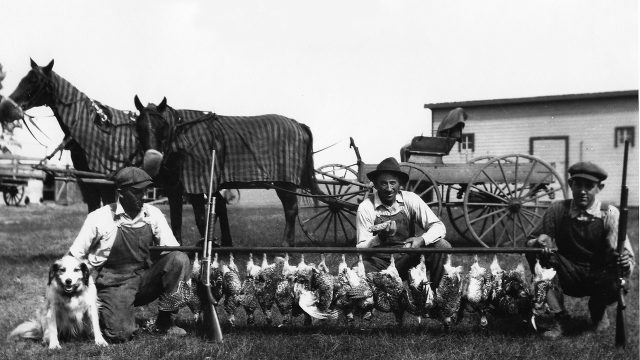Doug Leier: North Dakota's Wildlife Highlights

As North Dakota gives pause to acknowledge the 125th anniversary of statehood, much will be made of its history, and thoughts of how the state will age into the future.
And some of that history will revolve around wildlife and the outdoors, from the fur trade that attracted early explorers, to decimation of the vast prairie bison herds, through over-use of local game to provide food for settler families, and finally restoration of many game species through scientific wildlife management that is still ongoing today.
It’s a nice opportunity as we advance toward the official statehood celebration date on Nov. 2, and the Nov. 7 opening day of deer gun season, to look back at some of the highlights of North Dakota’s outdoors in the last 125 years.
Deer
In 1915, after the hustle and bustle of settlement and statehood had settled down, there were so few deer at the time, wildlife officials feared what would be unthinkable today – that North Dakota’s deer were nearing extinction.
But eventually, after many years of closed seasons, the first official deer gun season was held in North Dakota in 1931. In the 20 years after that, there were several interruptions as the state allowed just 13 seasons. During that same stretch, the highest number of licenses the Game and Fish Department made available to hunters was about 41,000 in 1952. The season was closed in 1953.
Fast forward to the years following the state’s centennial in 1989, and things started to change significantly. A strong base of Conservation Reserve Program habitat, mild winters and a conservative harvest strategy, helped increase deer populations to allow for more than 140,000 licenses per year during the early 2000s.
As populations were brought back to management objectives, and then well below desired populations in many units following a series of severe winters along with more than half of the state’s CRP contracts expiring, deer gun licenses were reduced. This year the State Game and Fish Department offered 48,000 deer gun licenses offered to hunters, the lowest total since the early 1980s.
Pheasants
Ring-necked pheasants were introduced into North Dakota in 1910, and through the years this bird has become the upland game bird favorite for generations.
In recent years, harvest in the state has been 600,000 to 650,000 roosters, which equals pretty good hunting in the eyes of biologists and most hunters.
The good old days of pheasant hunting were around 70 years ago in the early 1940s, when weather and an abundance of habitat created ideal conditions for ringnecks.
From 1940-46, harvest was estimated in the millions. Amazingly, hunters shot nearly 2.5 million birds in both 1944 and 1945.
Waterfowl
North Dakota is often called the nation’s duck factory. Nearly half of North America’s ducks are produced in the Prairie Pothole Region, and biologists have long understood that what drives duck hunting and duck populations is what happens on these prairie breeding grounds.
Duck numbers were high about the time of statehood and hit a low point during the 1930s when drought ravaged the plains. Since then ups and downs have come and gone with annual water conditions, but since 1994 waterfowl populations have remained high because of outstanding water conditions and abundant nesting cover provided by CRP.
North Dakota’s unique wildlife mix beyond deer, waterfowl and pheasants includes bighorn sheep, sage grouse and prairie chickens, plus pronghorn, moose, elk, mountain lions and others.
Those of us who enjoy the state’s wildlife today can be thankful that early state citizens recognized how settlement of North Dakota reduced many populations, and began a decades-long effort to get things going in the right direction.




